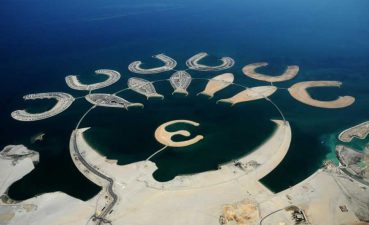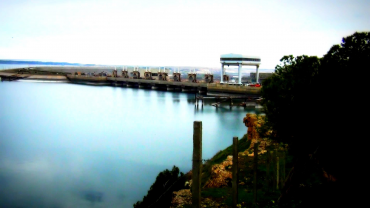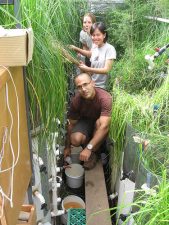For years now, Green Prophet has been reporting on the growing water shortage situation in Africa and the Middle East and its economic and geopolitical implications. However, the scale of the problem and the need for urgent international coordination to secure this basic commodity is becoming more urgent today as stories and pictures from Yemen warn of an inevitable social collapse in the middle of political uncertainty.
According to a recent report from Maplecroft, the Gulf nations are among the countries with the least available water per capita. The “water stress index“ identifies areas of water stress by calculating the ratio of domestic, industrial and agricultural water consumption, against renewable supplies of water from precipitation, rivers and groundwater.
In a new ranking of 186 countries, the water stress index rates 17 countries as ‘extreme risk,’ with the Middle East and North African (MENA) nations of Bahrain (1), Qatar (2), Kuwait (3) Saudi Arabia (4) Libya (5), the disputed territory of Western Sahara (6), Yemen (7), Israel (8), Djibouti (9) and Jordan (10) topping the ranking.
Meanwhile, the population of the Middle East is expected to double to over 600 million in the next four decades. Add to that the changing climate change patterns expected to cause increased drought and flooding, and the water shortage situation is predicted to become more intense and permanent than past water shortages.
But of all counties in the region, the one coming closest to running dry is Yemen. As reported by Green Prophet recently, the food situation has been exacerbated by months of fighting to overthrow the current president Ali Abdullah Saleh. Directly linked with the food insecurity is the water shortage as agriculture is the primary use of water. Past predictions that Yemen may be the first country to run out of water are no longer implausible. According to a report drawn up by the Washington Centre for Strategic and International Studies, within six years the city of Sana’a will have run out of water completely.
Other recent reports confirm that 19 out of the nations 21 aquifers are no longer being replenished. Consumption in the Yemeni capital exceeds by a factor of four the amount of water fed back into the underground reserves by local rainfall. Tap water is available only once every four days in Sanaa, a capital of 2 million people, while in Taiz, a southern city, tap water is available only every 20 days. Meanwhile nearly half of all Yemenis live under the poverty line set by the World Bank at $2 per day and don’t have access to proper sanitation, with more than 50 percent of children said to be malnourished.
The crisis is blamed on a number of factors, including inefficient irrigation techniques, increase in domestic consumption (the population of the region is set to double, from 24 to 48 million, over the next 17 years), corruption and poor resource management policies.
The problems created by the shortage of food and water in Yemen are exacerbated by the population’s dependence on qat, an extremely profitable crop which requires extensive irrigation and is so widespread that it takes up some 40 % of the country’s water resources.
While other “ water-deficit” counties like the UAE and Saudi Arabia can afford to invest in desalination plants, build underwater reservoirs, or buy land from other countries to secure food for their own people, in the long run these countries are as sensitive to the effects of depleting aquifers and declining home grown food production as Yemen. But time is running out faster for Yemen.
image: Flikr
Related Stories:
Syria Suffers Water Shortage- More News on Middle East Drought
In the face of “Nile-lessness” Egyptians Protest Water Shortages




